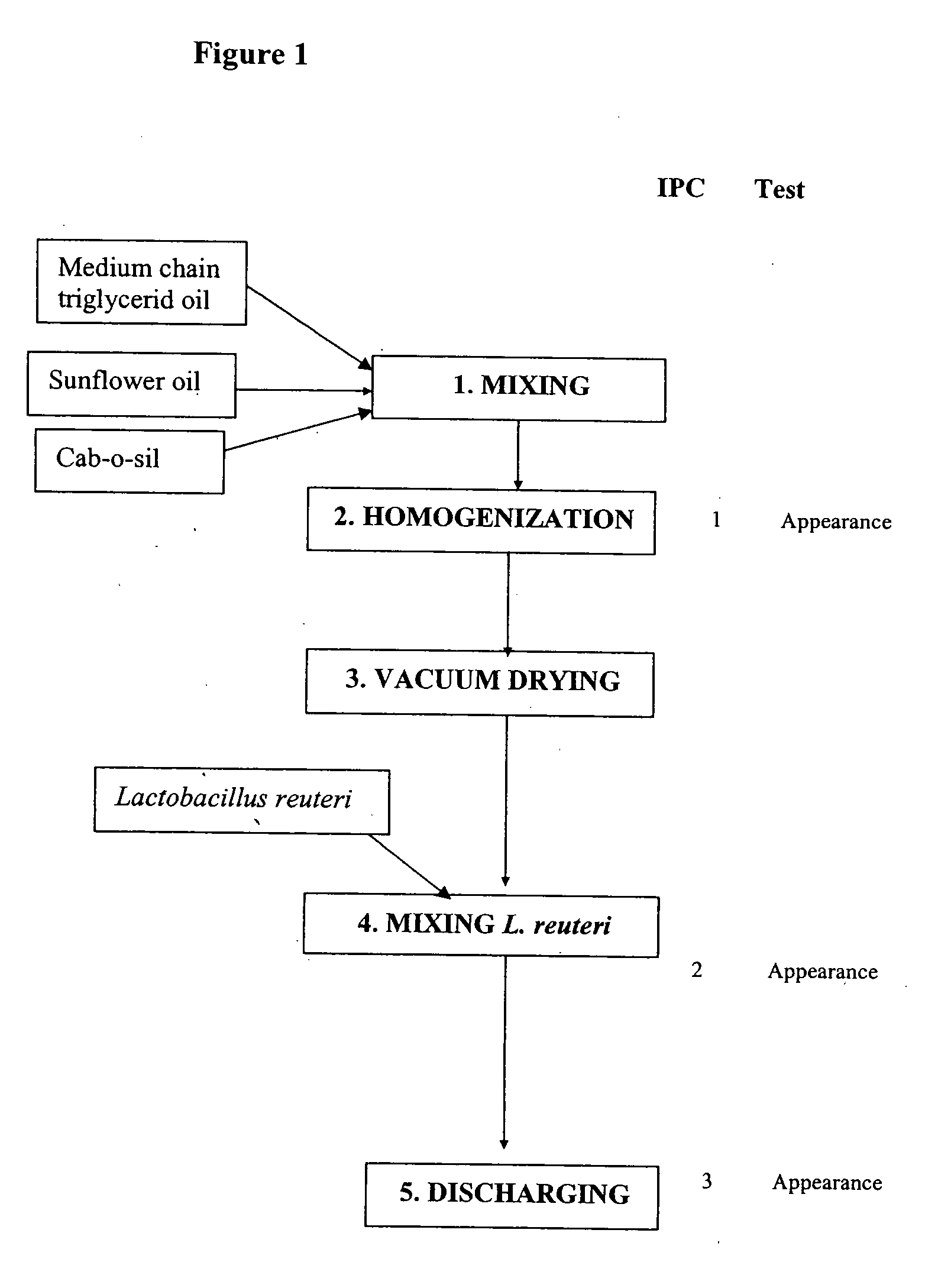Method for improved breast milk feeding to reduce the risk of allergy
a technology of lactic acid bacteria and breast milk, which is applied in the direction of antibacterial agents, instruments, immunodeficiency virus (hiv) load, etc., can solve the problems of mother-to-child transmission of hiv, and the risk of hiv transmission, so as to improve the level of anti-inflammatory cytokine il10, improve breast milk, and reduce the risk
- Summary
- Abstract
- Description
- Claims
- Application Information
AI Technical Summary
Benefits of technology
Problems solved by technology
Method used
Image
Examples
example 1
Method of Selection of Strains
[0038] The selection of the Lactobacillus strains to be used according to this invention can be done in the following step manner:
Evaluation of Stimulation of IL10 Production and TGF-beta-2 Reduction in Human Breast Milk by Cells of Lactobacillus Strains for Selection of Strains
[0039] This is an example of the selection method; certain variations and alteration of this method can be made by someone skilled in the art without departing from the invention herein.
Materials and Methods
[0040] Animals: Fifty-one germ free BALB / c mice (males and females) are purchased from Wisconsin University, USA. Mice are shipped in sterile plastic film shippers. Fifteen mice are transferred to each of 3 isolators (isolators # 2, 3, and 4). Two cages containing each one 2 males and 4 females are placed in isolator #1 (breeder).
Animal Handling
[0041] Mice are maintained in sterile flexible film isolators (Class Biologically Clean, Ltd, Madison, Wis., U.S.A.). Isolat...
example 3
Manufacturing of Products containing Selected Strain
[0071] In this example, a product called “Reuteri Drops” is manufactured. The product is an oil-based formulation containing L. reuteri SD2112 made for good stability and shelf life. The unique feature of production process is a drying step of the oil to remove most of the water in the oil.
[0072] The oil used in the invention herein is a pure edible vegetable oil, preferably sunflower oil. Although an oil such as a pure sunflower oil would not be expected to contain any water, an unexpected effect of the processing step of drying the oil by placing it under vacuum is a significantly increased stability of the lactobacilli in the formulation. Therefore, the oil used in the invention should be an oil from which it is possible to remove the water. Although it was previously known that the stability of such cultures is closely correlated with water activity of the formulation, it was not known to dry oil under vacuum for the stabiliz...
PUM
| Property | Measurement | Unit |
|---|---|---|
| acid bacterial strain | aaaaa | aaaaa |
| lactic acid | aaaaa | aaaaa |
| composition | aaaaa | aaaaa |
Abstract
Description
Claims
Application Information
 Login to View More
Login to View More - R&D
- Intellectual Property
- Life Sciences
- Materials
- Tech Scout
- Unparalleled Data Quality
- Higher Quality Content
- 60% Fewer Hallucinations
Browse by: Latest US Patents, China's latest patents, Technical Efficacy Thesaurus, Application Domain, Technology Topic, Popular Technical Reports.
© 2025 PatSnap. All rights reserved.Legal|Privacy policy|Modern Slavery Act Transparency Statement|Sitemap|About US| Contact US: help@patsnap.com

